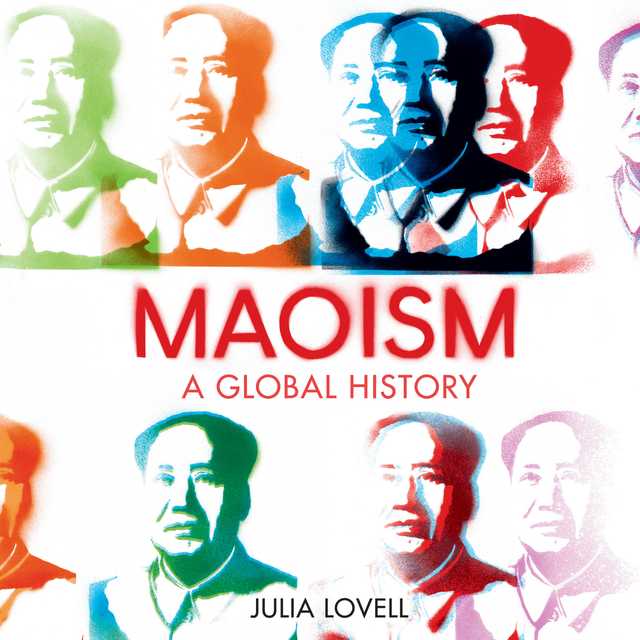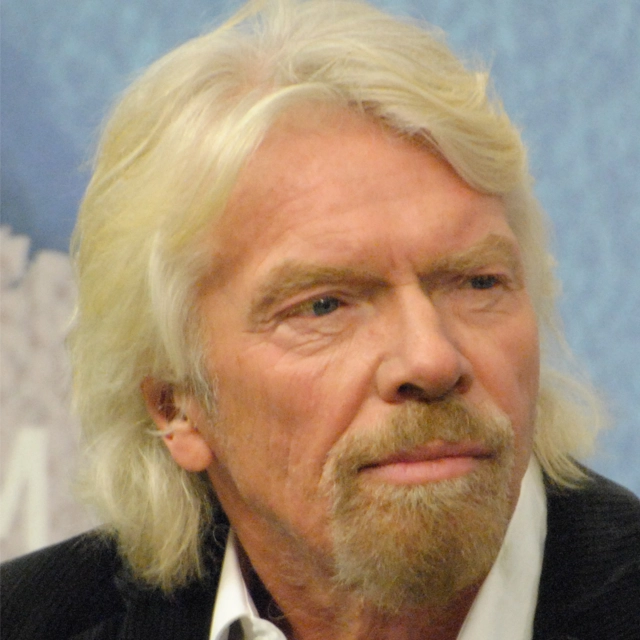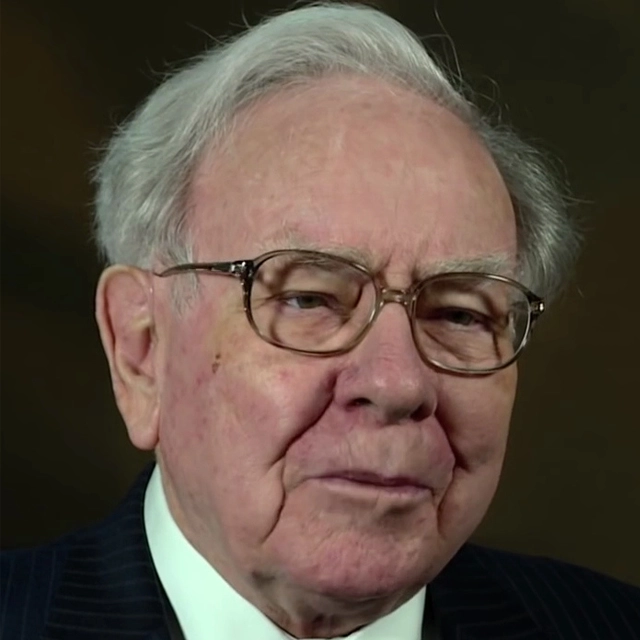Winning Audiobook Summary
Jack Welch knows how to win. During his forty-year career at General Electric, he led the company to year-after-year success around the globe, in multiple markets, against brutal competition. His honest, be-the-best style of management became the gold standard in business, with his relentless focus on people, teamwork, and profits.
Welch’s optimistic, no excuses, get-it-done mind-set is riveting. Packed with personal anecdotes and written in Jack’s distinctive no-b.s. voice, Winning is a great read and a great business book. It offers deep insights, original thinking, and nuts-and-bolts advice that are bound to change the way people think about work.
Read by Jack Welch
Other Top Audiobooks
Winning Audiobook Narrator
Jack Welch is the narrator of Winning audiobook that was written by Jack Welch
Jack Welch (1935-2020) was the Executive Chairman of the Jack Welch Management Institute, an online MBA school with more than 1,000 students. Prior to this, for 20 years, he was Chairman and CEO of General Electric Company, which was named the world’s most valuable corporation and was consistently voted the most admired company in the world by Fortune magazine. Welch was active in private equity and consulting, working with dozens of businesses in a wide variety of industries. Along with speaking to upwards of a million people around the world, CNBC named Jack Welch one of the Top 10 “Rebels, Icons and Leaders” of the past 25 years.
About the Author(s) of Winning
Jack Welch is the author of Winning
More From the Same
- Author : Jack Welch
- The Real-Life MBA
- Jack
- Publisher : HarperAudio
- Abraham
- American Gods [TV Tie-In]
- Dead Ringer
- House of Sand and Fog
- Prey
Winning Full Details
| Narrator | Jack Welch |
| Length | 11 hours 23 minutes |
| Author | Jack Welch |
| Category | |
| Publisher | HarperAudio |
| Release date | May 10, 2005 |
| ISBN | 9780060796716 |
Subjects
The publisher of the Winning is HarperAudio. includes the following subjects: The BISAC Subject Code is Business & Economics, Leadership
Additional info
The publisher of the Winning is HarperAudio. The imprint is HarperAudio. It is supplied by HarperAudio. The ISBN-13 is 9780060796716.
Global Availability
This book is only available in the United States.
Goodreads Reviews
Chris
June 20, 2012
1) Keep your HR Director on the Senior Team.2) The top 20% usually do a great job of managing their work-life balance because they've learned to cultivate relationships, budget time, set boundaries and absorb surprises. Crisis at home seldom spills over to work. By contrast, the other 80% usually have trouble keeping things in check because they lack these skills or cannot seem to translate them from one environment to the other. 3) Avoid people/weed out people who think/talk/act like victims. A few can be redeemed, but most will struggle with this as a lifestyle and quickly become a drain on the staff. Make the hard call. 4) There's something to merit rewards, even in a church setting. 5) Read, ask questions and surround yourself with others to do the same. 6) Energy is critical. A leader must not only bring energy to every transaction, she must also catalyze/draw out energy in the people she leads.
Not
October 06, 2010
UNDERNEATH IT ALLHave a positive attitude and spread it around, never let yourself be a victim, and for goodness' sake -- have fun.MISSION AND VALUESEffective mission statements balance the possible and the impossible.Setting the mission is top management's responsibility. A mission cannot be delegated to anyone except the people ultimately held accountable for it.Example Value Statement: "We treat customers the way we would want to be treated" translates into:*** Give customers a good, fair deal. Great customer relationships take time. Do not try to maximize short-term profits at the expense of building those enduring relationships. Always look for ways to make it easier to do business with us.Communicate daily with your customers. If they are talking to you, they can't be talking to a competitor.Don't forget to say thank you. ***Example Value Statement: "We strive to be the low cost provider through efficient and great operations" translates into:*** Leaner is better.Eliminate bureaucracy.Cut waste relentlessly.Operations should be fast and simple.Value each other's time.Invest in infrastructure. ***We should know our business best. We don't need consultants to tell us what to do.In the most common scenario, a company's mission and its values rupture due to the little crises of daily life in business.CANDOR, VOICE AND DIGNITYLack of candor blocks smart ideas, fast action and good people contributing all the stuff they've got. It's a killer.To get candor, you reward it, praise it, and talk about it. Most of all, you yourself demonstrate it in an exuberant and even exaggerated way.Some people have better ideas than the others; some are smarter or more experienced or more creative. But everyone should be heard and respected.DIFFERENTIATING PEOPLEA company has only so much money and time. Winning leaders invest where the payback is the highest. They cut their losses everywhere else.Differentiate 20% top, 70% middle and 10% bottom performers. It may be demotivating for the 70% but revs the engines of the others.LEADERSHIPWhat leaders do:*** 1. Leaders relentlessly upgrade their team, using every encounter as an opportunity to evaluate, coach, and build self-confidence.2. Leaders make sure people not only see the vision, they live and breathe it.3. Leaders get into eveyone's skin, exuding positive energy and optimism.4. Leaders establish trust with candor, transparency, and credit.5. Leaders have the courage to make unpopular decisions and gut calls.6. Leaders probe and push with a curiosity that borders on skepticism, making sure their questions are answered with action.7. Leaders inspire risk taking and learning by setting the example.8. Leaders celebrate. ***Take every opportunity to inject self-confidence into those who have earned it. Use ample praise, the more specific the better.Leaders never score off their own people by stealing an idea and claiming it as their own.You are not a leader to win a popularity contest. You are a leader to lead.If you're left with that uh-oh feeling in your stomach, don't hire the guy.Just because you're the boss doesn't mean you're the source of all knowledge.Work is too much a part of life not to recognise moments of achievment. Grab as many as you can. Make a big deal out of them.HIRINGLook for positive energy, ability to energise the others, edge (the courage to make tough yes-or-no decisions), the ability to get the job done and passion.For the top look for authenticity, the ability to see around the corners, the strong penchant to surround themselves with people better and smarter than they are, heavy-duty resilience.Do not hire someone into the last job of his career, unless it's to be the head of a function or CEO.PEOPLE MANAGEMENT1. Elevate HR to a position of power and primacy and make sure HR people have the special qualities to help managers build leaders and careers. In fact, the HR types are pastors and parents in the same package.2. Use a rigorous, nonbureaucratic evaluation system, monitored for integrety.3. Create effective mechanisms: money, recognition, training -- to motivate and retain.4. Face straight into charged relationships -- with unions, stars, sliders, and disrupters.5. Fight gravity, and instead of taking the middle 70% for granted, treat them like the heart and sould of the organisation.6. Design the org char to be as flat as possible, with blindingly clear reporting relationships and responsibilities.Good evaluation systems are:1. Clear and simple2. Meare on relevant, agreed-upon criteria that relate directly to an individual's performance3. At least one evaluation a year, preferably twice in format, face-to-face sessions4. Should include a professional development componentIdeally, a star wil be replaced within eight hours. This sends the message that no single individual is bigger than the company.Make the company flatter. Managers should have ten direct reports at the minimum and 30 to 50 percent more if they are experienced.FIRINGNo surprises. No humiliation. Every person who leaves goes on to represent your company. They can bad-mouth or praise. Integrity violations are no-brainers. Don't hesitate for a moment and let everyone know why.Layoffs are more complicated. They shouldn't come as a surprise. Every employee should know how a company is doing.Firing for nonperformance is delicate. It shouldn't be a surprise. Use your instincts.CHANGE1. Attach every change to a clear goal.2. Hire and promote only true believers and get-on-with-it types.3. Ferret out and remove the resisters, even if their performance is satisfactory.4. Look out for wrecks and exploit change.CRISIS MANAGEMENTDon't deny there's a problem, act. Implement change to prevent this in the future. The organisation will survive, ultimately stronger for what happened.STRATEGYStrategy means making clear-cut choices about how to compete. Ponder less, do more:1. Come up with a big aha for your business -- a smart, realistic, relatively fast way to gain sustainable competitive advantage.WHAT THE PLAYING FIELD LOOKS LIKE NOWWho are the competitors in this business, large and small, new and old?Who has what share, globally and in each market? Where do we fit in?What are the characteristics of this business? Commodity or high value or something in between?Is it long cycle or short?Where is it on the growth curve? What the drivers of profitability?What are the strengths and weaknesses of each competitor? How good are their products? How much does each one spend on R&D? How big is each sales force? How performance-driven is each culture?Who are this business's main customers, and how do they buy?WHAT YOUR COMPETITION HAS BEEN UP TOWhat has each competitor done in the past year to change the playing field?Has anyone introduced game-changing new products, technologies, distribution channels?Are there any new entrants, and what have they been up to in the past year?WHAT YOU'VE BEEN UP TOWhat have you done in the past year to change the competitive playing field?Have you bought a company, introduced a new product, stolen a competitor's key salesperson, or licensed a new technology from a start-up?Have you lost any competitive advantages that you once had -- a great salesperson, a special product, a proprietary technology?WHAT'S AROUND THE CORNERWhat scares you most in the year ahead -- what one or two things could a competitor do to nail you?What new products or technologies could you competitors launch that might change the game?What M&A deals would knock you off your feet?WHAT'S YOUR WINNING MOVE?What can you do to change the playing field -- is it an acquisition, a new product, globalisation?What can you do to make customers stick to you more than ever before and more than to anyone else?2. Put the right people in the right jobs to drive the big aha forward.3. Relentlessly seek out the best practices to achieve your big aha, whether inside or out, adapt them, and continually improve them.BUDGETINGLink it to strategy, and focus on two questions:How can we beat last year's performance?What is our competition doing, and how can we beat them?ORGANIC GROWTH1. Spend plenty up front and put the best, hungries, and most passionate people in leadership roles.2. Make an exaggerated commotion about the potential and importance of the new venture.3. Err on the side of freedom; get off of the new venture's back.MERGERS AND ACQUISITIONSWhen done right 1+3=3. Seven pitfalls:1. Believing that a merger of equals can actually occur.2. Ignoring cultural fit.3. "Reverse hostage" situation, where the acquired ends up calling all the shots afterwards.4. Integrating too timidly. A merger should be complete within niety days.5. Conqueror syndrome where the acquired talent is lost.6. Paying to much.7. Resistance of the acquired teamSIX SIGMASix Sigma is a way to improve a copmany's operational efficiency, raise productivity, and lower costs.A huge part of making your customers sticky is meeting or exceeding their expectations, which is exactly what Six Sigma helps you do.Six Sigma is about variation and removing it from your customer's interface with you.THE RIGHT JOBWorking for some companies is like winning an Olympic medal. For the rest of your career, you are associated with great performance.Every job you take is a gamble that could increase your chances or shut them down.Working to fulfill someone else's needs or dreams almost always catches up with you.If a job doesn't excite you on some level -- just because of the stuff of it -- don't settle.Authenticity may be the best selling point you've got.If you are let go don't let yourself spiral into inertia and despair.The job is for you if:*** You like the people a lot -- you can relate to them, and you genuinely enjoy their company. In fact, they even think and act like you do.The job gives you the opportunity to grow as a person and a professional and you get the feeling you will learn things there that you didn't even know you needed to learn.The job gives you a credential you can take with you, and is in a business and industry with a future.You are taking the job for yourself, or you know whom you are taking it for, and feel at peace with the bargain.The "stuff" of the job turns your crank -- you love the work, it feels fun and meaningful to you, and even touches something primal in your soul. ***The job isn't for you if:*** You feel like you'll need to put on a persona at work. After a visit to the company, you find yourself saying things like, "I donj't need to be friends with the people I work with".You're being hired as an expert, and upon arrival, you will most likely be the smartest person in the room.The industry has peaked or has awful economics, and the company itself, for any number of reasons, will do little to expand your career options.You are taking the job for any number of other constituents, such as a spouse who wants you to travel less or the sixth-grade teacher who said you would never amount to anything.The job feels like a job. In taking it, you things like, "This is just until something better comes along", or "You can't beat the money". ***GETTING PROMOTEDDo deliver sensational performance, far beyond expectations, and at every opportunity expand your job beyond its official boundaries.Don't make your boss use political capital in order to champion you.Do manage your relationships with your subordinates with the same carefulness that you manage the one with your boss.Do get on the radar screen by being an early champion of your company's major projects or initiatives.Do search out and relish the input of lots of mentors, realising that mentors don't always look like mentors. There is no one right mentor. There are many right mentors.Do have a positive attitude and spread it around. You can win without being upbeat -- if every other star is aligned -- but why would you want to try?Don't let setbacks break your stride.A BAD BOSSGenerally speaking, bosses are not awful to people whom they like, respect, and need. Think hard about your performance.In any bad boss situation you cannot let yourself be a victim.WORK-LIFE BALANCEThe reality:1. Your boss's top priority is competitiveness. Of course he wants you to be happy, but only insasmuch as it helps the company win. In fact, if he is doing the job right, he is making your job so exciting that your peronal life becomes a less compelling draw.2. Most bosses are perfectly willing to accommodate work-life balance challenges if you have earned it with performance. The key word here is: IF3. Bosses know that the work-life policies in the company brochure are mainly for recruiting purposes and that real work-life arrangements are negotiated one-on-one in the context of a supportive culture, not in the context of "But the company says ..!"4. People who publicly struggle with work-life balance problems and continually turn to the company for help get pigeonholed as ambivalent, entitled, uncommited, or incompetent -- or all of the above.5. Even the most accommodating bosses believe that work-life balance is your problem to solve. In fact, most know that there are really just a handful of effective strategies to do that, and they wish you would use them.Best practices:1. Keep your head in whatever game you're at, i.e. compartmentalise.2. Have the mettle to say no to requests and demands outside your chosen work-life balance plan.3. Make sure your work-life balance plan doesn't leave you out.
Serise
August 09, 2012
Winning. Winning. Winning. Where do I even start with Winning? This is an audiobook/book that I listen to and read ALL THE TIME. Differentiation, 20-70-10, and who can forget CANDAH? If you get the audiobook, keep in mind that this is narrated by Jack Welch. In full Bostonian accent. However, it adds a certain rawness and grit to a business book that really gives it nice dimension. I'm a pretty big Jack Welch fan, but there are some down points. I feel that Six Sigma is a flawed methodology, a point that Welch would never agree with. He is very pro-6S, and more power to him. Some people might shy away from the book because he's talking about GE and you might not have a business that big. Let me put that concern to rest -- EVERYONE can gain from "Winning". If you dream about hiring, Winning will also shape that. Wanting to switch careers or get into a new job? When the former CEO of one of the world's largest corporations tells you advice on that note -- listen. It is really that good. When that fateful day comes that Mr. Welch is no longer here, this book will stand tall even after his passing.
Pradit
September 10, 2012
Winning is one of the book I like the best, due to its practicality. Although I finished reading this book since 6 years ago, I still remember the chapter on Strategy which is really practical. That chapter contains questions that you can use to run a workshop to develop a strategy for your company. It as well suggests the best practices of companies that win.This book covers all the topics that management have to concern, starting from how to set corporate vision and values, candor as the best way to communicate internally, how to differentiate people, what good leaders should do. It also includes how to hire, manage, and even fire people, as well as "change before you have to change", crisis management, budgeting and evaluation, how to grow your business organically (in other word, horizontally), concerns and pitfalls in mergers and acquisitions, and Six Sigma as a quality improvement program.The book even cover personal part on your career, including work-life balance that he admitted he could not do this well himself.If you have not read this book yet, I strongly recommend it is really worth your time. Then you will read it not just once, but many times like me.
Lucas
December 19, 2012
The Candor Effect:1) Candor gets more people in the conversation, and when you get more people in the conversation, to state the obvious,, you get idea rich. By that, I mean any more ideas get surfaced, discussed, pulled apart, and improved. Instead of everyone shutting down, everyone opens up and learns.2) Candor generates speed. When ideas are in everyone's face, they can be debated rapidly, expanded and enhanced, and acted upon.3) Candor cuts costs - lots - although you'll never be able to put a precise number on it. Just think how it eliminates meaningless meetings and b.s. reports that confirm what everyone already knows. Think of how candor replaces fancy PowerPoint slides and mind-numbing presentations and boring off-site conclaves with real conversations, whether they're about company strategy, a new product introduction, or someone's performance.DifferentiationOne of the main misunderstandings about differentiation is that is only about people. That's to miss half of it. Differentiation is a way to manage people and businesses.Basically, differentiation holds that a company has two parts, software and hardware. Software is simple - it's your people. If you are a large company, your hardware is the different businesses in your portfolio. If you are smaller, your hardware is your product lines.Every company has strong businesses or product lines and weak ones and some in between. Differentiation requires managers to know which is which and to invest accordingly. To do that, of course, you have to have a clear-cut definition of "strong." At GE, "strong" meant a business was No. 1 or No. 2 in its market. If it wasn't, the managers had to fix it, sell it, or as a last resort, close it. Other companies have different frameworks for investment decisions. They put their money and time only into businesses or product lines that promise double-digit sales growth, for instance. Or they invest only in business or product lines with a 15 percent (or better) discounted rate of return (DCRR).Now let's talk about the more controversial topic, differentiation among people. It's a process that requires managers to assess their employees and separate them into three categories in terms of performance: top 20 percent, middle 70, and bottom 10. Then - and this is key - it requires managers to act on that distinction. I emphasize the word "act" because all managers naturally differentiate in their heads. But very few make it real.When people differentiation is real, the top 20 percent of the employees are showered with bonuses, stock options, praise, love, training, and a variety of rewards to their pocketbooks and souls. There can be no mistaking the stars at a company that differentiates. They are the best, and they are treated that way.The middle 70 percent are managed differently. This group is enormously valuable to any company; you simply cannot function without their skills, energy, and commitment. After all, they are the majority of your employees. And that's the major challenge, and risk, in 20-70-10 - keeping the middle 70 engaged and motivated.That's why so much of managing the middle 70 is about training, positive feedback, and thoughtful goal setting. If individuals in this group have particular promise, they should be moved around among businesses and functions to increase their experience and knowledge and to test their leadership skills. To be clear, managing the middle 70 is not about keeping people out of the bottom 10. It is not about saving poor performers. That would be a bad investment decision. Rather, differentiation is about managers looking at the middle 70, identifying people with potential to move up, and cultivating them. But everyone in the middle 70 needs to be motivated and made to feel as if they truly belong. You do not want to lose the vast majority of your middle 70 - you want to improve them.As for the bottom 10 percent in differentiation, there is no sugar-coating this - they have to go. That's more easily said than done. It's awful to fire people, but if you have a candid organization with clear performance expectations and a performance evaluation process, then people in the bottom 10 percent generally know who they are. When you tell them, they usually leave before you ask them to. No one wants to be in an organization where they aren't wanted. One of the best things about differentiation is that people in the bottom 10 percent of organizations often go on to successful careers at companies and in pursuits where they truly belong and where they can excel.Work-OutThese were two- or three-day events held at GE sites around the world, patterned after New England town meetings. Groups of thirty to a hundred employees would come together with an outside facilitator to discuss better ways of doing things and how to eliminate some of the bureaucracy and roadblocks that were hindering them. The boss would be present at the beginning of each session, laying out the rationale for the Work-Out. He or she would also commit to two things: to give an on-the-spot yes or no to 75 percent of the recommendations that came out of the session, and to resolve the remaining 25 percent within 30 days. The boss would then disappear until the end of the session, so as not to stifle open discussion, returning only at the end to make good on his or her promise.What Leaders Do1) Leaders relentlessly upgrade their team, using every encounter as an opportunity to evaluate, coach, and build self-confidence.2) Leaders make sure people not only see the vision, they live and breathe it.3) Leaders get into everyone's skin, exuding positive energy and optimism.4) Leaders establish trust with candor, transparency, and credit.5) Leaders have the courage to make unpopular decisions and gut calls.6) Leaders probe and push with a curiosity that borders on skepticism, making sure their questions are answered with action.7) Leaders inspire risk taking and learning by setting the example.8) Leaders celebrate.You have to evaluate - making sure the right people are in the right jobs, supporting and advancing those who are, and moving out those who are not.You have to coach - guiding, critiquing, and helping people to improve their performance in every way.You have to build self-confidence - pouring out encouragement, caring, and recognition. Self-confidence energizes, and it gives your people the courage to stretch, take risks, and achieve beyond their dreams. It is the fuel of winning teams.Hiring Process TipsThree Acid Tests1) The first test is for integrity. People with integrity tell the truth, and they keep their word. They take responsibility for past actions, admit mistakes, and fix them. They know the laws of their country, industry, and company - both in letter and in spirit - and abide by them. They play to win the right way, by the rules. Does the person seem real? Does she openly admit mistakes? Does he talk about his life with equal measures of candor and discretion?2) The second test is for intelligence. It means the candidate has a strong dose of intellectual curiosity, with a breadth of knowledge to work with or lead other smart people. Don't confuse education with intelligence.3) The third ticket to the game is maturity. The individual can withstand the heat, handle stress and setbacks, and, alternatively, when those wonderful moments arise, enjoy success with equal parts of joy and humility. Mature people respect the emotions of others. They feel confident but are not arrogant. In fact, mature people usually have a sense of humor, especially about themselves. The 4-E (and 1-P) Framework1) The fist E is positive energy. We just talked about this characteristic in the chapter on leadership. It means the ability to go go go - to thrive on action and relish change. People with positive energy are generally extroverted and optimistic. They make conversation and friends easily. They start the day with enthusiasm and usually end it that way too, rarely seeming to tire in the middle. They don't complain about working hard; they love to work. They also love to play. People with positive energy just love life.2) The second E is the ability to energize others. Positive energy is the ability to get other people revved up. People who energize can inspire their team to take on the impossible - and enjoy the hell out of doing it. In fact, people would arm wrestle for the chance to work with them. Now, energizing others is not just about giving Pattonesque speeches. It takes a deep knowledge of your business and strong persuasion skills to make a case that will galvanize others.3) The third E is edge, the courage to make tough yes-or-no decisions. Look, the world is filled with gray. Anyone can look at an issue from every different angle. Some smart people can - and will - analyze those angles indefinitely. But effective people know when to stop assessing and make a tough call, even without total information. Little is worse than a manager at any level who can't cut bait, the type that always says, "Bring it back in a month and we'll take a good, hard look at it again," or that awful type that says yes to you, but then someone else comes into the room and changes his mind.4) The fourth E is execute, the ability to get the job done. Maybe this fourth E seems obvious, but for a few years, there were just the first three Es. Thinking these traits were more than sufficient, we evaluated hundreds of people and labeled a slew of them "high-potentials," and moved many of them into managerial roles. In that period, I traveled to personnel review sessions in the field with GE's head of HR, Bill Conaty. At the review sessions, we would refer to a single page that had each manager's photo on it, along with his or her boss's performance review and three circles, one for each E. Each one of these Es would be colored in to represent how well the individual was doing. Then one Friday night after a weeklong trip to our midwestern businesses, Bill and I were flying back to headquarters, looking over page after page of high-potentials with three solidly colored-in circles. Bill turned to me. "You know, Jack, we're missing something," he said. "We have all these great people, but some of their results stink." What was missing was execution. It turns out you can have positive energy, energize everyone around you, make hard calls, and still not get over the finish line. Being able to execute is a special and distinct skill. It means a person knows how to put decisions into action and push them forward to completion, through resistance, chaos, or unexpected obstacles. People who can execute know that winning is about results.5) If a candidate has the four Es, then you look for that final P - passion. By passion, I mean a heartfelt, deep, and authentic excitement about work. People with passion care - really care in their bones - about colleagues, employees, and friends winning. They love to learn and grow, and they get a huge kick when the people around them do the same. The funny thing about people with passion, though, is that they usually aren't excited just about work. They tend to be passionate about everything. They're sports trivia nuts or they're fanatical supporters of their alma mater or they're political junkies. Whatever - they just have juice for life in their veins.Hiring for the TopSometimes you need to hire a senior-level leader, someone who is going to run a major division or an entire company. In that case, there are four more highly developed characteristics that really matter.1) The first characteristic is authenticity. Why? It's simple. A person cannot make hard decisions, hold unpopular positions, or stand tall for what he believes unless he knows who he is and feels comfortable with that. I am talking about self-confidence and conviction. These traits make a leader bold and decisive, which is absolutely critical in times when you must act quickly. Just as important, authenticity makes leaders likable. Their "realness" comes across in the way they communicate and reach people on an emotional level. Their words move them; their message touches something inside.2) The second characteristic is the ability to see around corners. Every leader has to have a vision and the ability to predict the future, but good leaders must have a special capacity to anticipate the radically unexpected. In business, the leaders in brutally competitive environments have a sixth sense for market changes, as well as moves by existing competitors and new entrants.3) The third characteristic is a strong penchant to surround themselves with people better and smarter than they are. Every time we had a crisis at GE, I would quickly assemble a group of the smartest, gutsiest people I could find at any level from within the company and sometimes from without, and lean on them heavily for their knowledge and advice. I would make sure everyone in the room came at the problem from a different angle, and then i would have us all wallow in the information as we worked to solve the crisis. A good leader has the courage to put together a team of people who make him look like the dumbest person in the room! I know that sounds counterintuitive. You want your leader to be the smartest person in the room - but if he acts as if he is, he won't get half the pushback he must get to make the best decisions.4) The fourth characteristic is heavy-duty resilience. Every leader makes mistakes, every leader stumbles and falls. The question with a senior-level leader is, does she learn fro her mistakes, regroup, and then get going again with renewed speed, conviction, and confidence?To Manage People Well, Companies Should...1) Elevate HR to a position of power and primacy in the organization, and make sure HR people have the special qualities to help managers build leaders and careers. In fact, the best HR types are pastors and parents in the same package.2) Use a rigorous, nonbureaucratic evaluation system, monitored for integrity with the same intensity as Sarbanes-Oxley Act compliance.3) Create effective mechanisms - read: money, recognition, and training - to motivate and retain.4) Face straight into charged relationships - with unions, stars, sliders, and disrupters.5) Fight gravity, and instead of taking the middle 70 percent for granted, treat them like the heart and soul of the organization.6) Design the org chart to be as flat as possible, with blindingly clear reporting relationships and responsibilities.Initiating Change1) Attach every change initiative to a clear purpose or goal. Change for change's sake is stupid and enervating.2) Hire and promote only true believers and get-on-with-it types.3) Ferret out and get rid of resisters, even if their performance is satisfactory.4) Look at car wrecks.Anatomy of a Crisis: Plan of ActionAssumption 1) The problem is worse than it appears.Assumption 2) There are no secrets in the world, and everyone will eventually find out everything.Assumption 3) You and your organization's handling of the crisis will be portrayed in the worst possible light.Assumption 4) There will be changes in processes and people. Almost no crisis ends without blood on the floor.Assumption 5) The organization will survive, ultimately stronger for what happened.Business Strategy1) Come up with a big aha for your business - a smart, realistic, relatively fast way to gain sustainable competitive advantage.2) Put the right people in the right jobs to drive the big aha forward,3) Relentlessly seek out the best practices to achieve your big aha, whether inside or out, adapt them, and continually improve them.Making Strategy Real: 5 SlidesSlide 1: What the Playing Field Looks Like Now-Who are the competitors in this business, large and small, new and old?-Who has what share, globally and in each market? Where do we fit in?-What are the characteristics of this business? Is it commodity or high value or somewhere in between? Is it long cycle or short? Where is it on the growth curve? What are the drivers of profitability?-What are the strengths and weaknesses of each competitor? How good are their products? How much does each one spend on R&D? How big is each sales force? How performance-driven is each culture?-Who are this business's main customers, and how do they buy?Slide 2: What the Competition Has Been Up To-What has each competitor done in the past year to change the playing field?-Has anyone introduced game-changing new products, new technologies, or a new distribution channel?-Are there any new entrants, and what have they been up to in the past year?Slide 3: What You've Been Up To-What have you done in the past year to change the competitive playing field?-Have you bought a company, introduced a new product, stolen a competitor's key salesperson, or licensed a new technology from a startup?-Have you lost any competitive advantages that you once had - a great salesperson, a special product, a proprietary technology?Slide 4: What's Around the Corner?-What scares you most in the year ahead - what one or two things could a competitor do to nail you?-What new products or technologies could your competitors launch that might change the game?-What M&A deals would knock you off your feet?Slide 5: What's Your Winning Move?-What can you do to change the playing field - is it an acquisition, a new product, globalization?-What can you do to make customers stick to you more than ever before and more than to anyone else?Budgeting: A Better Way-How can we beat last year's performance?-What is our competition doing, and how can we beat them?Compensation for individuals and businesses is not linked to performance against budget. It is linked primarily to performance against the prior year and against the competition, and takes real strategic opportunities and obstacles into account.New Venture Guidelines1) Spend plenty up front, and put the best, hungriest, and most passionate people in leadership roles.2) Make an exaggerated commotion about the potential and importance of the new venture.3) Err on the side of freedom; get off the new venture's back.M&A Pitfalls (7) p. 220-1Getting Promoted-Deliver sensational performance, far beyond expectations, and at every opportunity, expand your job beyond its official boundaries.-Don't make your boss use political capital in order to champion you.-Manage your relationships with your subordinates with the same carefulness that you manage the one with your boss.-Get on the radar screen by being an early champion of your company's major projects or initiatives.-Search out and relish the input of lots of mentors, realizing that mentors don't always look like mentors.-Have a positive attitude and spread it around.-Don't let setbacks break your stride.Work-Life Balance1) Your boss's top priority is competitiveness. Of course he wants you to be happy, but only inasmuch as it helps the company win. In fact, if he is doing his job right, he is making your job so exciting that your personal life becomes a less compelling draw.2) Most bosses are perfectly willing to accommodate work-life balance challenges if you have earned it with performance.3) Bosses know that the work-life policies in the company brochure are mainly for recruiting purposes, and the real work-life arrangements are negotiated one-on-one in the context of a supportive culture, not in the context of "But the company says...!"4) People who publicly struggle with work-life balance problems or continually turn to the company for help get pigeonholed as ambivalent, entitled, uncommitted, or incompetent - or all of the above.5) Even the most accommodating bosses believe that work-life balance is your problem to solve. In fact, most of them know that there are really just a handful of effective strategies to do that, and they wish you would use them.
Adam
June 09, 2015
Wide-ranging business advice from someone who was very successful over the course of his career. Topics include performance reviews, mergers and acquisitions, strategy, budgeting, hiring, and firing.My favorite part was the bit about building trust in the organization through candor. In social life we've learned to be polite, not be critical of others, etc. In business you have to be honest, direct, and straight-forward with people, especially when you have critical feedback for them. In a word, candor.Unlike other books on business, this was not a meta-review of many great businesses (e.g. "Good to Great") or a consultant trying to peddle their wares (most of them). It's just a guy telling you what worked for him, and your mileage may vary.
Alissa
May 12, 2011
When compared the the business books that claim to have a magic formula that applies to any business, person or situation, the opinionated perspective of one guy and his experience was a welcome relief. I admit, when I first started the book, the abrasive tone and grating voice of the author was offputting--I didn't think I was going to get through much. However, it wasn't long before I forgot all about the audio experience and became engrossed in the material. Even at the times when I felt that the author was being harsh or I flat-out disagreed with the content, I could recognize the merit behind the underlying points. More often though I found the insights spot-on, and I often found that I had tuned out of the book because it got my mind racing in terms of how it applies to my situations. (Ironically, something that rarely happens with the "formula for success" type books.)The book was packed with hard-earned wisdom from a lifetime of business and management experience. I finished the book feeling that I had gotten a lot for the time I spent on it.
Karen
August 17, 2018
I have really enjoyed this book. Great read for just about anyone. Especially if you are in a leadership role.This book offers the reader a distinct opportunity to 'read and learn' directly from someone who sacrificed, fought through major personal challenges, and not only made a tremendous impact on a company, but also had tremendous impact on a countless of personal careers, not to mention, made a fortune by applying his fierce management strategies.If you desire a prosperous career, make this book part of your arsenal of knowledge.Winning is an attitude, it is preparation, it is application, and then, managing and doing what is necessary to succeed. This is such a powerful book of information, motivation, and most of all, business knowledge.
Tanja
September 24, 2014
A few pages into the book I was shocked at how American this book is. If employees don't deliver, get rid of them is one of the messages. If business units don't deliver (are number 1 or 2 in their sectors), shut them down. Of course, there is nothing wrong with this advice, it's just very difficult to implement. Not that I've had to, as of yet. Anywhow, Welch has been very succesful throughout his career and this book is his concise take on business. There is definitely constructive input to be had from this book, even for Scandinavians.
Sana
November 30, 2017
I was really surprised about how much I enjoyed this book. Straight forward, practical, no bs management book. Covers everything from leading people to setting budgets. He isn’t afraid to disagree with contemporary corporate fluff, which takes a bit to adjust to—but you gain an appreciation for it. His primary philosophy is that organisations should be a meritocracy and cuts out anything that interferes with that.
Stefan
June 05, 2018
The book has a lot of great insights (and even more anecdotes). I think I picked the book up at the right time for me. It wouldn't have added much value if I had read it earlier in my career.I'll suggest picking up this book when strategy, governance, and recruiting of seniors is a recurring pattern on your to-do list.
Elina
February 06, 2014
Easy to read, extremely useful and full of practical advises you'd like to apply once you read them. This is a must read directional guide not only for former executives, but also for those who are going to be a leader. Author enreached his book with plenty of stories and real life examples illustrating each advise or principle.
Lukasz
September 22, 2017
Polecam wszystkim początkującym adeptom sztuki zarządzania, są przeleciane w niej praktycznie wszystkie 'najgrubsze' tematy: Misja, zatrudnianie, etc. Bedzie dobre jako pierwsza ksiazka o zarzadzaniu w ogole.
Frequently asked questions
Listening to audiobooks not only easy, it is also very convenient. You can listen to audiobooks on almost every device. From your laptop to your smart phone or even a smart speaker like Apple HomePod or even Alexa. Here’s how you can get started listening to audiobooks.
- 1. Download your favorite audiobook app such as Speechify.
- 2. Sign up for an account.
- 3. Browse the library for the best audiobooks and select the first one for free
- 4. Download the audiobook file to your device
- 5. Open the Speechify audiobook app and select the audiobook you want to listen to.
- 6. Adjust the playback speed and other settings to your preference.
- 7. Press play and enjoy!
While you can listen to the bestsellers on almost any device, and preferences may vary, generally smart phones are offer the most convenience factor. You could be working out, grocery shopping, or even watching your dog in the dog park on a Saturday morning.
However, most audiobook apps work across multiple devices so you can pick up that riveting new Stephen King book you started at the dog park, back on your laptop when you get back home.
Speechify is one of the best apps for audiobooks. The pricing structure is the most competitive in the market and the app is easy to use. It features the best sellers and award winning authors. Listen to your favorite books or discover new ones and listen to real voice actors read to you. Getting started is easy, the first book is free.
Research showcasing the brain health benefits of reading on a regular basis is wide-ranging and undeniable. However, research comparing the benefits of reading vs listening is much more sparse. According to professor of psychology and author Dr. Kristen Willeumier, though, there is good reason to believe that the reading experience provided by audiobooks offers many of the same brain benefits as reading a physical book.
Audiobooks are recordings of books that are read aloud by a professional voice actor. The recordings are typically available for purchase and download in digital formats such as MP3, WMA, or AAC. They can also be streamed from online services like Speechify, Audible, AppleBooks, or Spotify.
You simply download the app onto your smart phone, create your account, and in Speechify, you can choose your first book, from our vast library of best-sellers and classics, to read for free.
Audiobooks, like real books can add up over time. Here’s where you can listen to audiobooks for free. Speechify let’s you read your first best seller for free. Apart from that, we have a vast selection of free audiobooks that you can enjoy. Get the same rich experience no matter if the book was free or not.
It depends. Yes, there are free audiobooks and paid audiobooks. Speechify offers a blend of both!
It varies. The easiest way depends on a few things. The app and service you use, which device, and platform. Speechify is the easiest way to listen to audiobooks. Downloading the app is quick. It is not a large app and does not eat up space on your iPhone or Android device.
Listening to audiobooks on your smart phone, with Speechify, is the easiest way to listen to audiobooks.






























